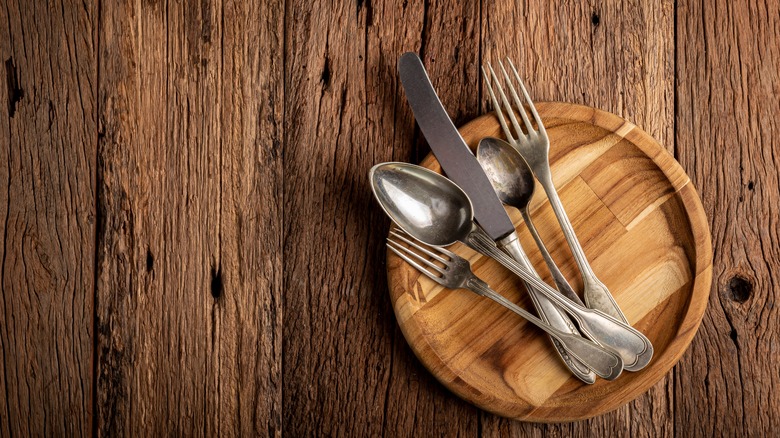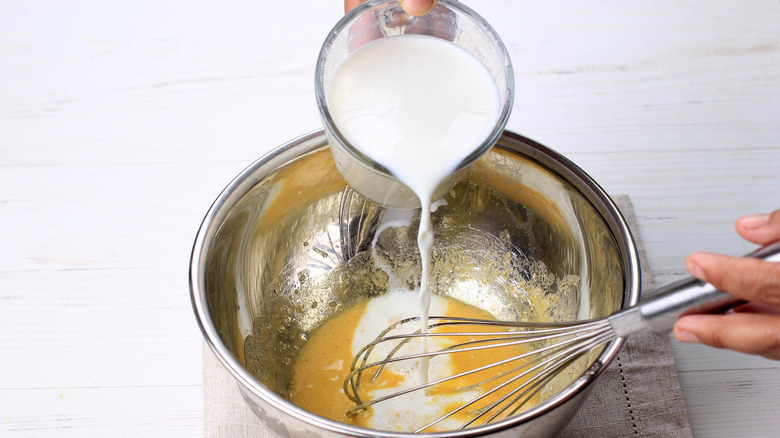Don't Throw Out Sour Milk, Use It To Clean Silverware
That carton of weeks-old milk sitting at the back of your fridge or in the door (the one place you should never store milk, by the way) is looking a tad yellow and has started emitting a suspiciously tart odor. It's turned sour, and you think surely it's time to throw it out. But not so fast — there's actually a lot that you can do with the liquid, like using it to polish your silverware.
Sour milk is commonly mistaken for spoiled milk, which is not always the same thing. Milk that is well past the expiration date and looks curdled, tastes bitter, and smells extremely tart (like rotten garbage) is spoiled and should be thrown away. On the flip side, milk that just smells a tad tangy because of bacteria fermentation (much like sour cream) but looks fine otherwise is sour milk. There is a fine line between the two, but one that makes all the difference because sour milk has great applications. So much so that milk is often soured on purpose.
It's all because of the excess lactic acid, which is considered a prized asset. This same lactic acid is what is excellent at dissolving the dull gray, brown, or black layer of tarnish that often forms on silver. All you have to do is pour enough sour milk in a pot to fully submerge your silverware. Let the utensils soak for about a half-hour, until the stubborn tarnish melts away. Then, thoroughly rinse your forks and spoons with soap and warm water.
More ways to use sour milk
The lactic acid in sour milk is so powerful it can be used for a range of other applications. You can try cleaning pots and pans with it too (the lactic acid in ketchup also makes it good at cleaning copper pans).
But beyond cleaning, if you still have extra sour milk leftover, consider cooking or baking with it. For instance, sour milk has similar properties as store-bought cultured buttermilk, since the latter is also just milk that's fermented with bacteria. As a result, sour milk makes for an excellent buttermilk substitute that can be used to bake scones, cakes, or fluffy pancakes. In fact, some bakers even prefer to bake their breads with sour milk rather than other fermented liquids like buttermilk.
The acidity present in sour milk can also tenderize meats and tone down fishy smells, making it a fantastic addition to marinades. Or, you can always turn it into cottage cheese. Bring sour milk to a boil, add some lemon juice, and stir the liquid until it separates into curds and whey. The curds can be drained and turned into soft cottage cheese, whereas the whey can be bottled and used to add an extra dose of protein to everyday meals. The possibilities for using that sour milk are endless!


